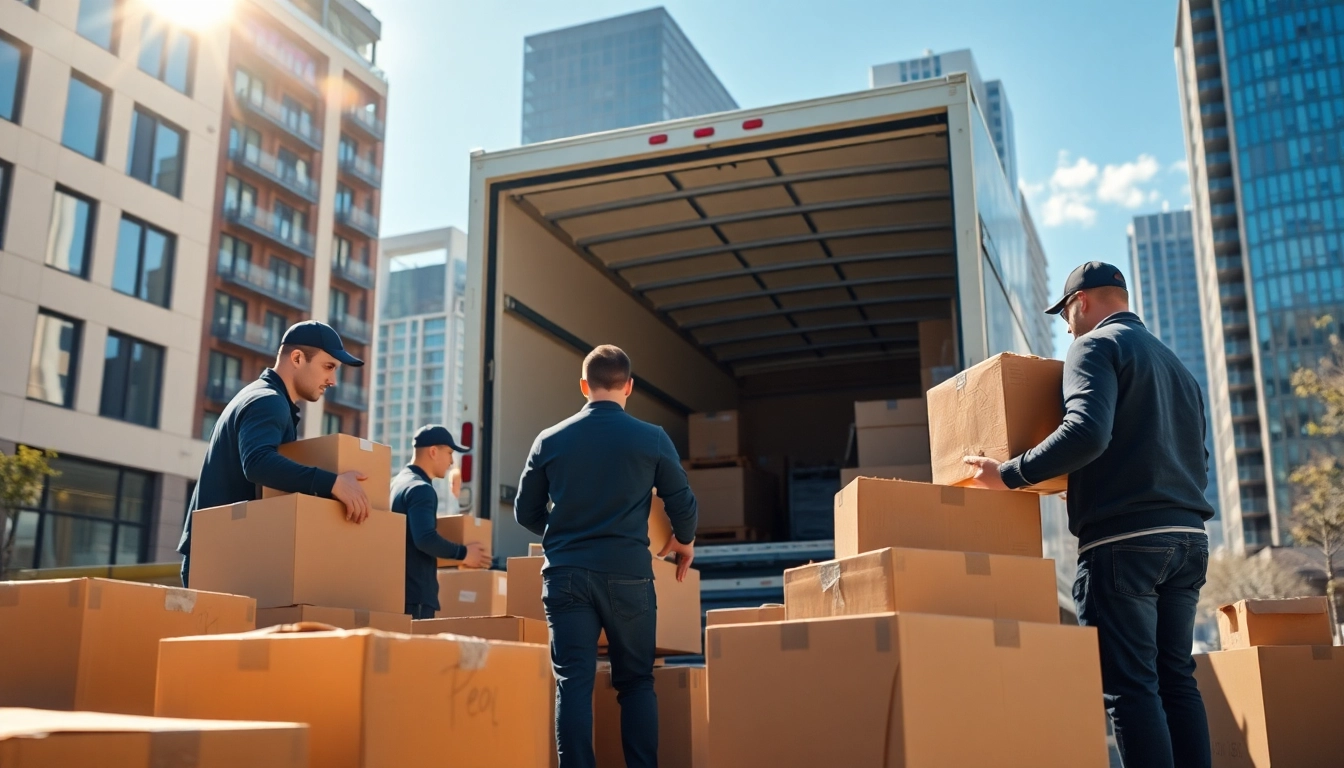Understanding the Basics of House Moves
House moves, an essential yet often stressful operation, can be made less daunting with the right preparation and knowledge. Whether you’re relocating to a new house in the same city or moving across the country, understanding the intricacies of house moves is crucial for a seamless transition.
What are House Moves?
At its core, a house move involves relocating your possessions from one residence to another. This process encompasses various tasks including packing up your belongings, transporting them, and unpacking at your new home. The term “house move” can also refer to different scenarios including local moves, long-distance moves, and international relocations. Each type of move presents unique challenges and requires tailored strategies to ensure everything goes smoothly.
When to Plan Your Move
Timing can significantly affect the ease of your house move. The best time to plan your move often depends on multiple factors, including your personal schedule, the housing market, and seasonal conditions. Here are a few tips to help you determine the ideal timing:
- Seasonal Considerations: Moves are typically more common in the spring and summer months. If you aim to save money, consider moving during the offseason (fall or winter).
- Give Yourself Time: Start planning at least 8-10 weeks in advance. This will give you ample time to sort, pack, and address any unexpected issues that may arise.
- Work Schedule: Choose dates that are convenient regarding work commitments. If possible, try to avoid moving during busy work periods.
Key Terminology in House Moves
Understanding the terminology commonly associated with house moves can help make the process smoother. Below are some key terms to familiarize yourself with:
- Bill of Lading: A legal document outlining the agreement between the shipper and the moving company.
- Inventory: A detailed list of items being moved, which helps in ensuring nothing gets left behind or misplaced.
- Full-Service Move: A service where the moving company handles every aspect of the move, including packing, loading, transporting, and unpacking.
- Self-Service Move: A more budget-friendly option where the movers only handle the transportation, and you manage the packing and unpacking.
Preparing for Your House Move
Creating a Moving Checklist
Preparation is key to a successful house move. A well-organized moving checklist can serve as your roadmap, helping ensure that no important tasks are overlooked. Here’s how to create an effective moving checklist:
- Set a Moving Date: Confirm the date for your move and mark it on your calendar.
- Declutter: Go through each room and decide what to keep, donate, or discard. This will not only reduce the volume of items to pack but also create a fresh start in your new home.
- Find a Moving Company: Research and compare moving companies. Look for reviews, get quotes, and check their licensing to ensure you’re choosing a reputable service.
- Gather Packing Supplies: Assemble boxes, tape, packing paper, and markers. Consider using eco-friendly packing materials to reduce waste.
- Notify Utilities: Schedule disconnection and connection dates for utilities at both your old and new homes.
Decluttering Your Home
Decluttering is one of the most beneficial actions you can undertake before a move. Not only does it make packing and unpacking easier, but it also helps create a more organized space in your new home. Here’s how to effectively declutter:
- Room-by-Room Approach: Tackle one room at a time to avoid feeling overwhelmed.
- The Four-Box Method: Use four boxes for sorting: Keep, Donate, Sell, and Trash. This will help simplify your decision-making process.
- Digital Declutter: Don’t forget about digital items like files and photos. Organize your digital space by deleting unnecessary files and backing up important data.
Finding the Right Moving Company
Choosing the right moving company is crucial for a hassle-free house move. A good moving company will not only transport your belongings but also provide guidance throughout the moving process. To find the best fit for your needs:
- Get Referrals: Ask friends, family, or coworkers for recommendations.
- Research Online: Read reviews and ratings on various platforms, such as Google, Yelp, or the Better Business Bureau.
- Verify Credentials: Ensure the company is licensed and insured. Request a written estimate after an in-home evaluation.
- Understand Contracts: Read the fine print to understand what services are included and what extra fees might apply.
Executing a Successful House Move
Packing Techniques for Safety
Proper packing methods can greatly reduce the risk of damage to your belongings during transit. Consider these packing techniques:
- Choose the Right Boxes: Use sturdy, clean boxes that match the size and weight of the items you’re packing.
- Use Packing Materials: Utilize bubble wrap, packing peanuts, or even towels to cushion fragile items.
- Label Everything: Clearly label each box with its contents and the room it belongs in, to simplify unpacking later.
Loading and Unloading Essentials
Efficiently loading and unloading your belongings can save time and effort on moving day. Here are some essential tips:
- Load Heavier Items First: Start with larger appliances and furniture, followed by lighter boxes.
- Balance the Load: Distribute weight evenly in the moving truck to ensure safe transport.
- Unloading in Sequence: Unload the truck in the order you will unpack to streamline the process.
Managing Utilities and Address Changes
Before moving, it’s important to manage utilities and address changes to avoid disruptions. Here’s how:
- Create a Utility Checklist: List down all utilities (electricity, water, gas, internet) and schedule shut-offs and connections.
- Notify Important Contacts: Inform your bank, employer, and other necessary parties about your address change.
- Redirect Mail: Set up mail forwarding with the postal service to ensure you don’t miss important correspondence.
After Your House Move: Settling In
Unpacking and Organizing Tips
Once you’ve moved into your new home, unpacking can feel like a daunting task. To make this phase easier:
- Start with Essentials: Unpack the necessities first, including kitchen items, toiletries, and clothes.
- Use a Design Plan: Have a clear plan for each room’s layout to avoid unnecessary movement of heavy furniture.
- Get the Family Involved: Turn unpacking into a family activity by assigning rooms or tasks to each member.
Exploring Your New Neighborhood
Familiarizing yourself with your new surroundings is crucial for making your transition smooth and enjoyable. Here are some ways to explore your new neighborhood:
- Walk or Bike Around: Take a stroll or bike ride around to discover local shops, parks, and amenities.
- Join Community Groups: Look for community events or social media groups related to your neighborhood.
- Visit Local Establishments: Frequent nearby restaurants, cafes, and other businesses to support your new community.
Updating Important Documents
After moving, it’s essential to ensure that all your important documents reflect your new address. This might include:
- Driver’s License: Visit your local DMV to update your address.
- Voter Registration: Update your voter information to ensure you remain eligible to vote.
- Insurance Policies: Inform your insurance providers of your move to ensure coverage during and after the transition.
Common Challenges in House Moves and Solutions
Dealing with Last-Minute Issues
Unexpected issues can arise at any time during a move. Here’s how to effectively address last-minute challenges:
- Stay Organized: Refer to your moving checklist and remain flexible to adapt to changes.
- Communicate with Your Movers: Keep an open line of communication with your moving company for timely updates and assistance.
- Prioritize Tasks: Focus on critical tasks first, such as loading items or dealing with utility disconnects.
What to Do if Your Move is Delayed
If your move gets delayed, it’s essential to remain calm and have a backup plan:
- Contact Your Moving Company: Understand the reason for the delay and your options moving forward.
- Arrange Temporary Accommodations: If necessary, find a temporary place to stay, such as a hotel or a friend’s home.
- Stay Prepared: Keep essentials accessible in case of an extended delay.
Tips for Moving with Pets and Kids
Moving with pets and children can present additional challenges. Here are some strategies to manage this smoothly:
- Plan Ahead for Pets: Consider hiring a pet sitter on moving day and create a safe space for them in the new home.
- Involve Children in the Process: Help children adjust by letting them pack their belongings or choose how to decorate their new space.
- Maintain Routines: Try to stick to familiar schedules as much as possible to reduce stress for both pets and children.




